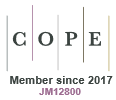Just Accepted
This article has been peer reviewed and accepted for publication. It is in production and has not been edited, so may differ from the final published form.
Assessing the impact of microplastics and nanoplastics on shrimp growth, physiology, antioxidant, immune responses, and gut microbiota
Abstract
Context. Shrimps are particularly susceptible to plastic contamination, especially in regions of heavy human activity. This susceptibility calls for a thorough investigation into the consequences of MPs, NPs, and related pollutants on shrimp health and productivity, with repercussions for human nutrition. Aims. This paper emphasizes the significance of comprehending the varieties of microplastics, their dispersion in environments, and the complex toxicities involved in lessening the harm of plastic pollution on crucial marine species and coastal habitats. Key results. Our analysis uncovers a wide array of detrimental effects of MPs and NPs on shrimp, such as metabolic disturbances, modified feeding habits, tissue alterations, organ malfunction, increased susceptibility to heavy metals, breeding difficulties, and higher death rates. NPs can impact shrimp indirectly by altering the composition of bacteria in the gastrointestinal tract. Conclusions. The adverse effects of MP and NP exposure extend to reduced vitality, stunted growth, misregulated gene expression, oxidative stress, and genetic damage.
MF25008 Accepted 03 June 2025
© CSIRO 2025



